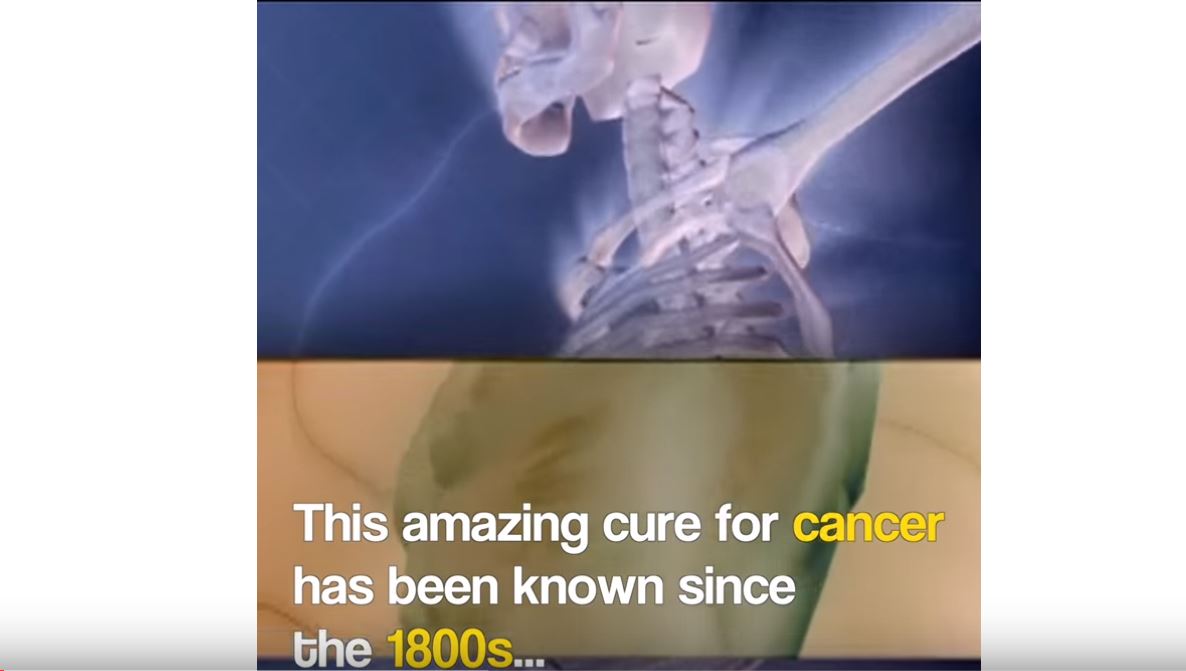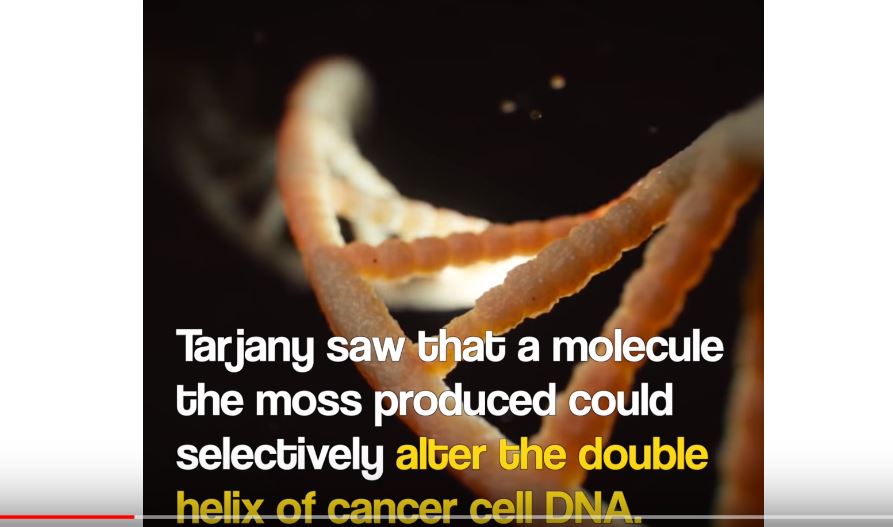The video starts with a bold claim — a miracle natural medicine can cure cancer, and big pharmaceutical companies have been hiding it from you for decades.

Since it was published two weeks ago, the video, titled “This NATURAL TRICK can CURE YOUR CANCER,” has racked up more than 10 million views, something the creator, Canadian scientist, Jonathan Jarry was not expecting.
WATCH:A McGill University scientist put people to the test recently with a video claiming an easy cure for cancer. As Global’s Anne Leclair reports, the fake video is going viral and serves as a reminder to double check facts.

That’s because the video is purposefully fake.
Jarry, a science communicator and biologist from McGill University’s Office for Science and Society, made the video with a key message in mind for its viewers: beware of pseudoscience and be sceptical of what you see online.
WATCH BELOW: Can you identify fake news?

“A friend of mine sent me a similar video — one of many on the internet — about a cure for cancer that had been suppressed by the government and asked me if there was any truth to it,” Jarry told Global News over email.
LISTEN: Jonathan Jarry on his viral video
“There wasn’t, but what was truly sad about it was that this conspiracist video had six million views. The science communication work we do at the office never gets this kind of traffic, so it got me thinking that I could try to make a video that looked like these easily shareable ones that spread misinformation, except that ours would show you how easy it is to lie and misrepresent with a video. ”
WATCH: Woman charged with fraud after allegedly claiming she had cancer

How the video unfolds
The video starts off with upbeat music, aesthetically pleasing images and a bold claim: “This amazing cure for cancer has been known since the 1800s, but the knowledge has been suppressed by big pharmaceutical companies.”
Jarry said the purpose of packaging the video like this was to help sell its central claim.
“I used a square video format which looks good on cell phones; peppy music to put you in a good mood; I highlighted certain keywords to make them pop up; and used old black-and-white photographs to give an air of authority,” he said.
The video then states that this miracle cure has been suppressed by big pharmaceutical companies.
The video says the cure for cancer was discovered in 1816, when Dr. Johan R. Tarjany discovered a species of moss that could kill the disease. The moss, called Funariidae karkinolytae grew all over his hometown and fascinated him as a boy.
The scientist saw that a molecule the moss produced could selectively alter the helix of cancer cell DNA. Tarjany started to add the moss to his diet and never developed cancer, the video states.
The active ingredient in the moss has been banned by the Food and Health Administration (FDA), the video claims, adding, “but you can find it online.”
- Posters promoting ‘Steal From Loblaws Day’ are circulating. How did we get here?
- Canadian food banks are on the brink: ‘This is not a sustainable situation’
- Video shows Ontario police sharing Trudeau’s location with protester, investigation launched
- Solar eclipse eye damage: More than 160 cases reported in Ontario, Quebec
“I bet you’re a big fan of Dr. Tarjany now, especially because of this music! Peew Peew!” The image then shows people laughing and having run on a theme park ride.
The tone then shifts about halfway through the video.
It’s revealed that not only is Dr. Tarjany made up, but the name is an anagram of Jonathan Jarry, the guy who made the video. The man in the video is Otto Maass, the chairman of the department of chemistry at McGill University from 1937 to 1955.
Jarry even used photos of two different people to see if viewers would notice.
“I wanted for the people who usually watch these ‘cancer cures’ videos to pay attention and associate our video with the sort that they usually watch. Tipping our hand too soon might not have made the same impact,” Jarry said.
The video ends with a warning message: be skeptical and ask questions, and when in doubt, talk to a scientist or your doctor.
“I hope this video is a reminder to question the information we consume and that there are reliable, science-based answers out there,” he said. “They don’t always come in pretty packages, and they might not always be the easy answers we want, but they represent the best knowledge we have to make good decisions about our health.”
WATCH: Myths and facts on how to improve your health
Playing on people’s emotions
Gulprit Kindra, a professor at Telfer School of Management at the University of Ottawa, said the reason many people click and share videos like this (that claim to have a simple cure a disease) is that it plays on people’s emotions.
“I understand people are emotional about this and so when they hear about a miracle cure they want it … so it’s playing on human emotion and misery of people,” he said.
He said when someone creates a fake video claiming to have a quick cure, “they know out of 100 people, three or four fools will look into it. It’s very sad, unprofessional,” Kindra said.
The aim of many of the “pseudoscience” videos is to discredit the conventional medical cure industry, he said, adding that people are more willing to believe it because many are skeptical about their experiences with hospital and doctors.
“So when they hear about the hot new snake oil they want to give it a shot,” he said. “I think it’s a very dangerous development that has remained unchecked for too long.”









Comments